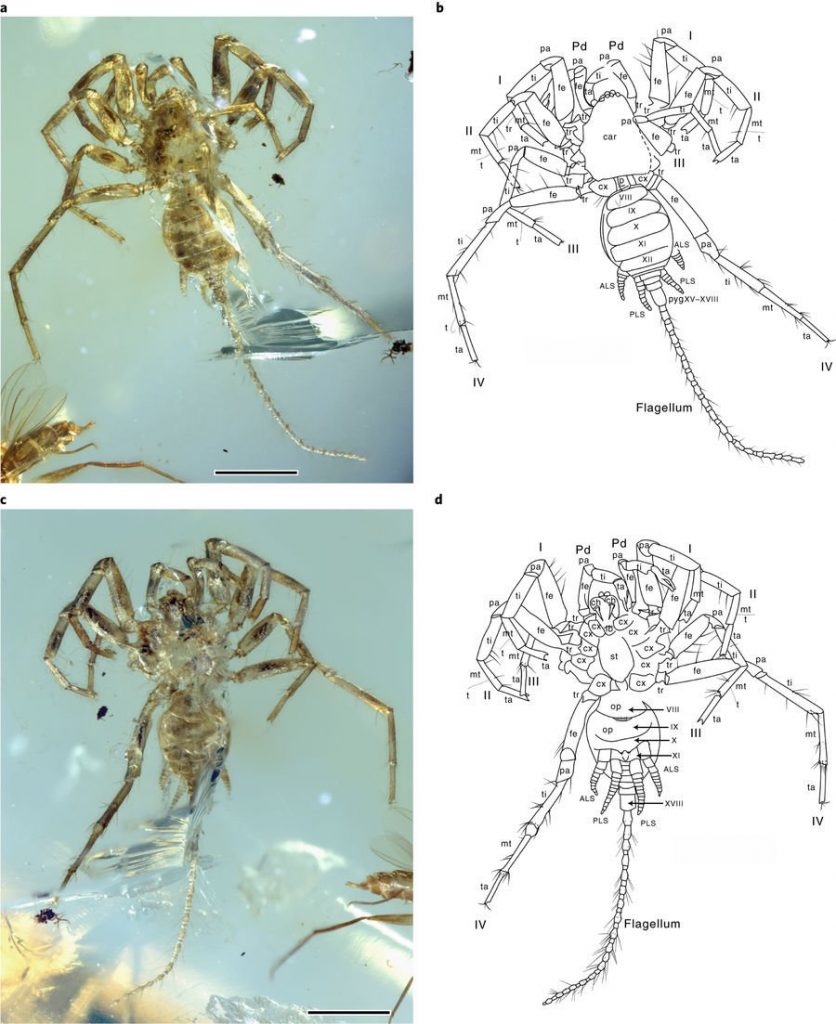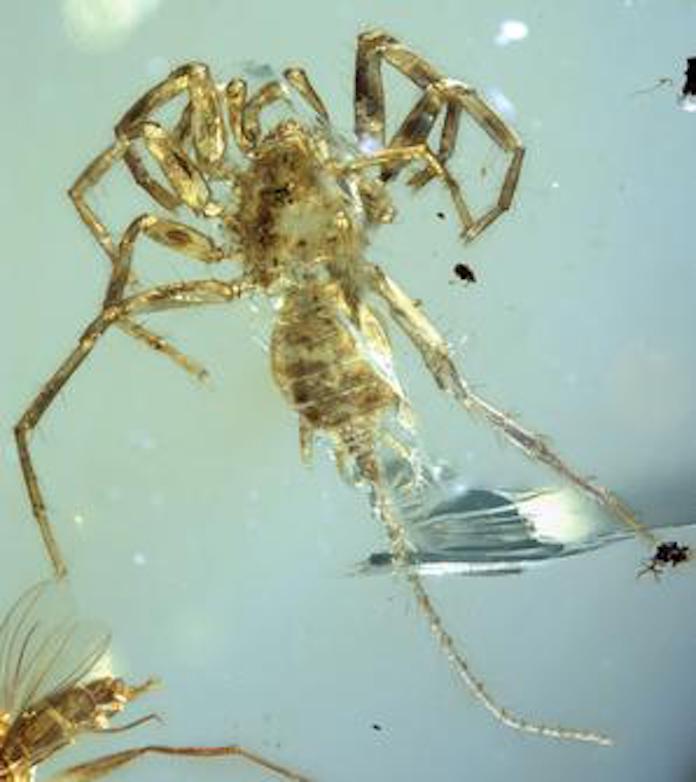Researchers in Myanmar have discovered specimens of Chimerarachne yingi, an ancient arachnid and cousin of the modern spider, perfectly preserved in amber.

The little critters look a lot like spiders we’re familiar with today, with one big difference. The Chimerarachne yingi has a long tail, like an early version of the tail on modern scorpions.

According to the research study, scientists have known for about a decade that spiders evolved from arachnids with tails, more than 315 million years ago, though they hadn’t found proof of that in the fossil record until now.

The ancient specimens, members of a clade called Uraraneida, have a lot in common with modern spiders, including a segmented abdomen, multi-articulate spinnerets and spider-like chelicerae (pincers). The discovery changed the timeline scientists originally theorized for the development of modern spiders and their Uraraneida sisters.
It’s clear, based on the spinnerets of the amber-preserved fossils, that Uraraneids and spiders co-existed for much of their evolutionary history.

Four specimens of the tiny spider relative, which scientists think lived in and around tree trunks, have been found preserved in amber. While they seem downright prehistoric, the researchers say there’s a possibility – however remote – that Chimerarachne yingi may not be extinct. The forests of Myanmar, which are dense, largely unexplored, and contain untold numbers of insect and arachnid species, could still be home to Chimerarachne yingi or its descendants today.
“We haven’t found them, but some of these forests aren’t that well-studied, and it’s only a tiny creature,” Dr. Paul Selden of the University of Kansas told the BBC.




